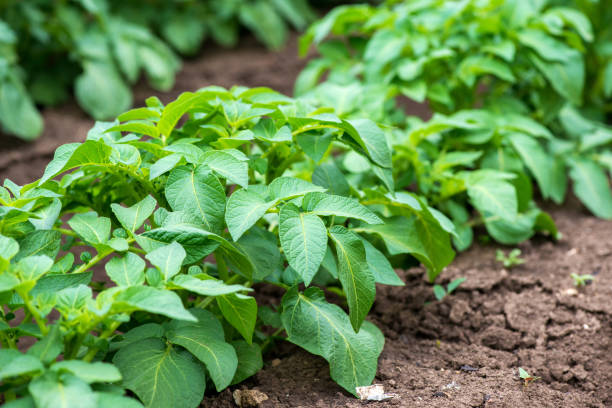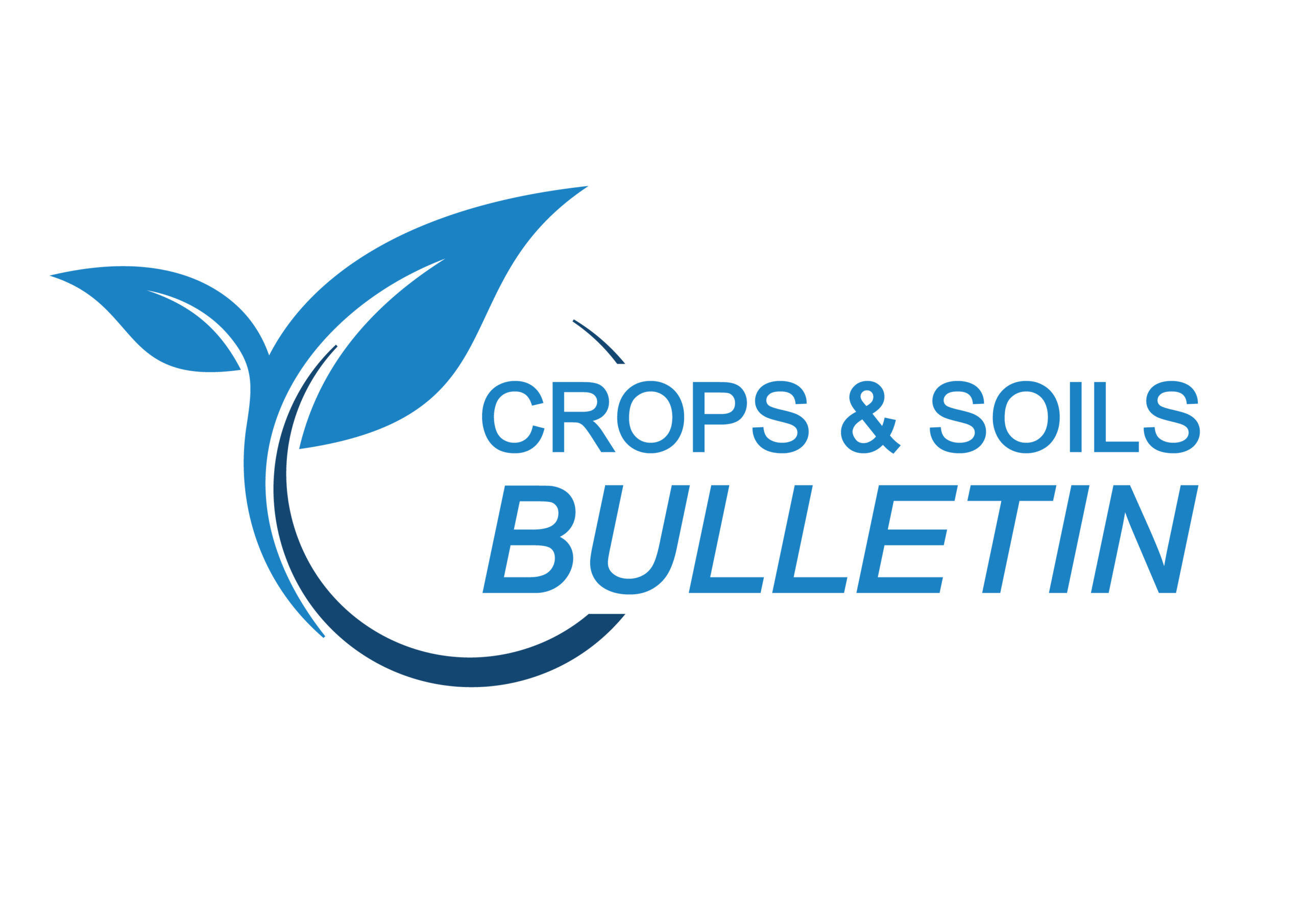Home > Articles > Crops and Soils Bulletin June 2023 – Key Aspects of the Control of Potato Late Blight
Crops and Soils Bulletin June 2023 – Key Aspects of the Control of Potato Late Blight
19 June 2023This article is produced as a part of the FAS Crops & Soils Bulletin. Subscribe now to receive the full report in your inbox monthly.
Thanks for subscribing! You should receive your first newsletter in the coming month.
A crucial development compared with the 2022 season is the considerable spread on the continent of a new genotype of the blight pathogen P. infestans. This genotype, 43_A1, has not yet been detected in GB but the consensus view is that it is a matter of when and where in Britain it appears, not if. This new genotype is now established in several continental European countries. Most importantly, many of the isolates of 43_A1 tested so far are insensitive to the FRAC group of fungicides called CAAs. Unfortunately, this group has four actives for blight control and cross resistance means that the effectiveness of benthiavalicarb, dimethomorph and mandipropamid (and possibly valifenalate in the future) is potentially affected.
Fungicide programmes for 2023 require modification even although genotype 43_A1 has not yet been detected on the British Isles. (These programmes will require further revision if this newer genotype is detected here and it is insensitive.) It’s essential that programmes incorporate stronger measures to manage fungicide resistance. Greater attention needs to be paid to fungicide modes of action (MoA) (identified by FRAC Codes) when choosing products for programmes. This requires advanced planning. Avoid prolonged selection pressure from any one fungicide mode of action by ringing the changes in terms of FRAC Codes throughout the fungicide programme. The key principles of fungicide resistance management are established. Based on these growers should, as far as is practical*:
- Minimize the use of active ingredients with documented insensitivity issues, i.e. metalaxyl-M, fluazinam, benthiavalicarb, dimethomorph and mandipropamid
- The above should not be used without an effective resistance management partner in the tank
- Use mixtures of different FRAC Codes (either co-formulations or tank mixes)
- Alternate applications singly with different FRAC modes of action
- Tank mix mancozeb where appropriate
*Of course it is also vital to continue selecting the fungicides with the most appropriate characteristics for the blight-risk scenario at the time of application, i.e. keep basing fungicide choice on haulm blight efficacy, curative activity, rain-fastness, protection of new growth and protection of tubers, as the need dictates.
Protect against the risk of resistance arising to the QiI fungicides Ranman Top and Shinkon (key for the control of tuber blight) through tank mixing with other modes of action and/or strict single alternation of modes of action.
Mancozeb is a unique late-blight fungicide in that FRAC categorises it as having a multi-site contact activity. This considerably reduces the risk of insensitivity development. Mancozeb is a proven, strong resistance management partner.
Sources of inoculum
It’s important to eliminate, or at least minimize, the risk of inoculum spreading from primary sources of inoculum, i.e. infected groundkeepers, infected seed tubers and blighted dumps. This will reduce the risk of crop infection and allow each fungicide application to be more effective. Control with fungicides is easier, and less expensive, if the amount of inoculum challenging the crop is less.
Assessing the risk of blight
Syngenta’s Blightcast and JHI’s BlightSpy (https://blightspy.huttonltd.com/#/forecast), both of which forecast when Hutton Criteria will probably be met, are available in 2023. High-risk weather is a key risk factor but not the only one to consider. Elevated risk can also be active blight in the area, or a crop grown from seed that has tuber blight. Also consider crop location because periods of prolonged high relative humidity are more likely in sheltered locations. In general, later planting and emergence of the crop also increases the risk of crop infection.
Spray intervals
Routine spray intervals should be no longer than 7 days. Shorter intervals of 6 or 5 days may be required to control more aggressive genotypes such as 36_A2 during high-risk weather periods, especially extended ones (greater than 2 days). Most fungicides have a minimum spray interval of 7 days. However, shorter intervals can be obtained by alternating products. If there is prolonged low-risk weather during part of the coming season, then trials in GB have shown that to save fungicide cost it is better to 1) maintain shorter intervals but use fungicide products that are a bit less effective than 2) extend intervals.
Fungicide timing in relation to high-risk weather (protectant and curative activity)
For the fungicidal control of blight, the timing of application in relation to high-risk weather influences efficacy. Protectant fungicides give better protection if they are applied a day or two before a high-risk period. Curative fungicides prevent more early infections from developing into lesions if applied shortly after a high–risk period. If the target spray day is on the first or second day after a high-risk weather period, then it’s essential to use a fungicide with curative activity. Within this timescale, the greater the delay between the high-risk period and curative application, the greater curative efficacy required from the fungicide. In general the kick-back period will be less for very susceptible varieties, and/or where the temperature profile is high (e.g. between 20 and 23 oC rather than 10 to 15 oC) and/or for the more aggressive genotypes of blight that are now present in the UK, e.g. 36_A2. Curative active ingredients boost coverage because they are either translaminar or systemic and therefore are redistributed in the plant.
Blight control during rapid canopy
Very relevant during the current hot spell is that protecting crops against blight during rapid canopy development is more difficult the higher temperatures are during this phase of growth because very rapid growth of the haulm stretches fungicide protection. One study gives an indication of the effect of temperature on the magnitude of leaf area increase. At fixed temperatures of 10, 15 and 20 oC the increases in leaf area over 7 days during rapid canopy were approximately 40, 65 and 112 % respectively. In other words it more than doubled at the highest temperature. When selecting fungicide products to apply during rapid canopy check the temperatures forecast for the coming week. If above average, then ensure that the fungicides chosen offer good to very good control during this growth phase.
Planning ahead for the fungicidal control of tuber blight
Fungicide choice for tuber protection is limited because in the absence of fluazinam only two modes of action for highly effective tuber blight control remain available, i.e. fluopicolide (in Infinito), or cyazofamid and amisulbrom (in Ranman Top and e.g. Shinkon respectively) (both of these latter actives are QiIs). For crops with a longer growing season these modes of action need to be used sparingly, if at all, prior to stable canopy to ensure that they are available later in the season to protect the tubers as effectively as possible.

Sign up to the FAS newsletter
Receive updates on news, events and publications from Scotland’s Farm Advisory Service

